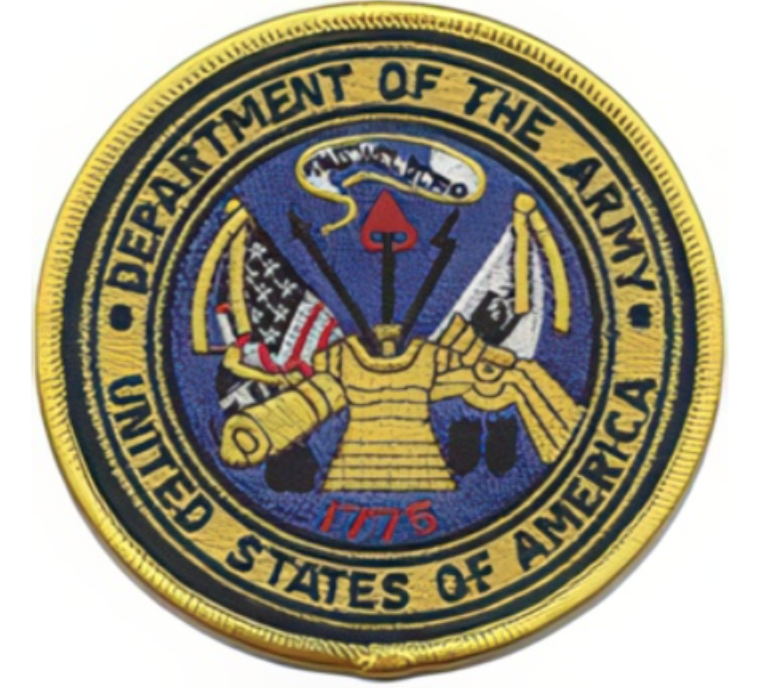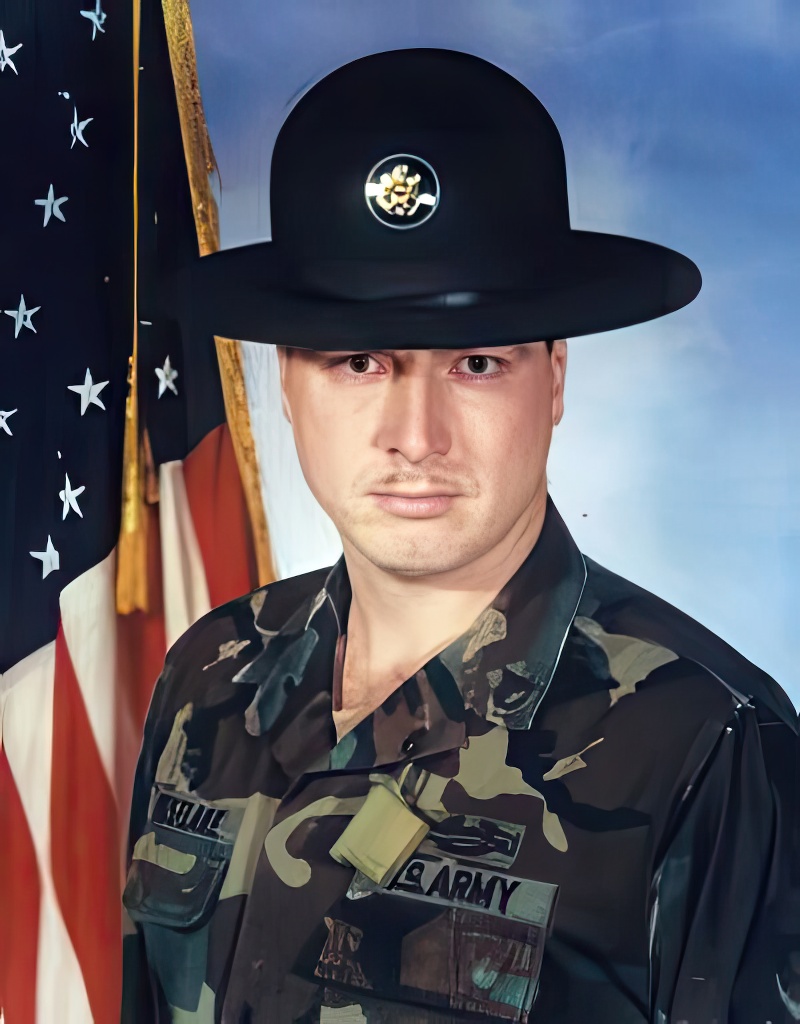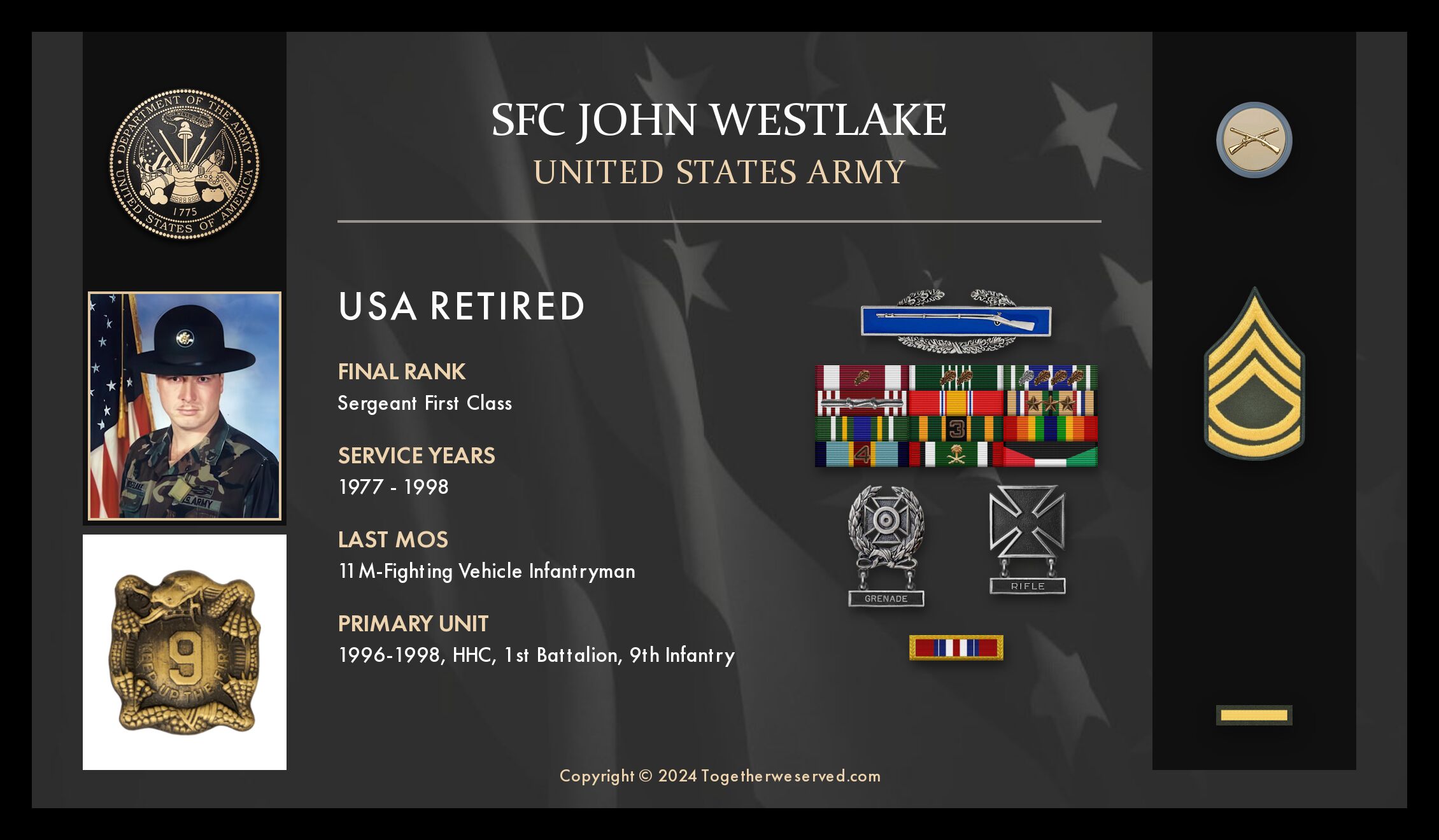PRESERVING A MILITARY LEGACY FOR FUTURE GENERATIONS
The following Reflections represents SFC John Westlake’s legacy of his military service from 1977 to 1998. If you are a Veteran, consider preserving a record of your own military service, including your memories and photographs, on Togetherweserved.com (TWS), the leading archive of living military history. The following Service Reflections is an easy-to-complete self-interview, located on your TWS Military Service Page, which enables you to remember key people and events from your military service and the impact they made on your life. Start recording your own Military Memories HERE.
Please describe who or what influenced your decision to join the Army?

I was influenced by a few factors. I was brought up in a patriotic New England family. I had uncles who fought in Vietnam, Korea, and WWII, and my grandfather on my mother’s side fought in WWI. I remember as a young boy going with most of them to the local Memorial Day parade. We would always stand near a bridge where the parade would stop and a wreath would be thrown into the water.
The other factor that influenced me was the 6 o’clock news. As I was growing up in the ’60s, the Vietnam War was in full swing, and the daily body count of US GI’s and Viet Cong would always be announced. I remember how it bothered me when there were more GI’s killed on any given day than VC. My mind was made up just as I started high school. I wanted to go over there and even the odds. Having grown up on a farm and already having handled rifles and shotguns, I felt I was ready.
Whether you were in the service for several years or as a career, please describe the direction or path you took. What was your reason for leaving?

I enlisted in 1976 while still a senior in high school on the delayed entry program. I enlisted for MOS 11E, Armor Crewman, with Jump School and assignment with the 82nd Airborne Division. I had taken three years of Naval Junior ROTC, and was to go in as a PFC. I was supposed to go in right after graduation.
As it turned out, I fell one credit short for English, and had to complete summer school. This impacted my enlistment. I ended up going in in August 1977. When I arrived at the Entrance Station in Boston (AFEES), I was told my MOS was changed from 11E to 11D, Armored Reconnaissance Specialist (now 19D, Cavalry Scout). I was okay with that. I took my first plane ride from Rhode Island to Kentucky for OSUT at Ft Knox. Long story short, I dislocated my right knee during training, tore the ACL, had to have surgery, and got reclassified as a 71L, Administrative Specialist.
I was then off to Ft Jackson, SC, for 71L AIT. There, when I first saw a female Drill SGT, I did not know how to take that at the time. I should have shown her more respect, but I was still Hooah from the CAV.
From Jackson I PCS’d to Istanbul, Turkey, to TUSLOG DET 67, where I was assigned as mail clerk and messenger. I had to go to the Istanbul Airport 6 days a week for the mail, and 3 days a week I had to make trips to outer detachments to deliver classified material. GI’s were not allowed to drive there, so I had a Turk contract driver and a Turk Army guard. Turkey was under martial law at this time.
Just before Christmas 1979, there was a terrorist attack that killed four Americans from my site.
The Iranian hostage crisis and the Soviet invasion of Afghanistan were going on at this time as well. As a result, Americans were not too popular. Some of the Turks knew what our classified mission was—and did not like it.

I PCS’d from there to Ft Belvoir, VA, with the intention of finishing up my enlistment and getting out. My first assignment there was at the Installation Mail Room, delivering mail and office distribution in a CJ5 Jeep. I hot-rodded that Jeep around and was usually back early from my runs. 🙂
Somehow, and don’t ask me how I was chosen to be the Post Sergeant Major’s administrative assistant. Talk about a big head! But I sort of had a bad attitude after Turkey–always late for formation, hair too long, boots not shined, etc. The Post Chief of Staff, COL Coaxly, hated me. 🙂 My office, which I shared with the commanding general’s driver, was next to the Post CSM’s, across from the Post Commander, his aide de camp, and secretary. The worst part of that job was that I could not type very well. Every month I had to type the certificate for the Post Soldier and NCO of the month, and the other secretaries would make fun of me typing with one finger, taking almost half a day to do it just right.
I had planned to ETS and had a job lined up on the outside, but that fell through. Also, I had just married a female soldier, so I re-enlisted. We both PCS’d to Stuttgart, Germany in 1982. She went to HHC, 7th Engr Bde, and I went to HHD, 563d Engr Bn, both on Ludendorff Kaserne, Kornwestheim, near Stuttgart. This was my first introduction to computers. I was sent to a 2-week school in Frankfurt to learn to use the one our PAC just received. I spent lots of time in the field. I was selected for nomination into the Sergeant Morales Club but didn’t make it, partly due to divorce. That was a three-year tour for me.
It was time to re-enlist again. My battalion commander, LTC Sam Raines, who I had served under at Ft Belvoir when he was a MAJ, had been SF in Vietnam, and I had really wanted to go SF, but my earlier knee injury did not allow that to happen. I tried to re-enlist again for Armor Crewman, but that came back denied, saying I was already on orders.

In 1985 I PCS’d to HQDA, Alexandria, VA, Hoffman I, 9th floor, the Army Casualty Operations Center. It was a 24/7 ops center that monitored active duty deaths and serious injuries worldwide. I was the only E-5 in the Ops Center. All others were E-6 and E-7. Our NCOIC was an E-8, and our OIC was an LTC. We fell under The Adjutant General’s Office, which was right down the hall.
Still not fond of the Admin MOS, I walked down to the 7th floor, to the Infantry Branch, walked in the door and said, “Make me an Infantryman!”
Off to Ft Benning, I went. I integrated into an OSUT company in Harmony Church to complete the AIT phase of Infantry Training. From there I went to a two week M2 Bradley Infantry Fighting Vehicle Course, then a 6 week Bradley Commanders’ Course. I PCS’d back to Germany in 1988.
Assigned to D Co, 3-5 Cav (formerly 2-36 Inf), 1st Bde, 3rd Armored Division, at Ayers Kaserne, “The Rock,” Kirchgoens, FRG. The unit had just transitioned from the M113 APC to the BFV. I served as an Infantry Squad Leader and a Bradley Commander (BC).
We deployed to Operation Desert Shield on 16 December 1990 and fought in the Gulf War.
Here is a link to my squad’s actions during that time.

I returned to Germany after that, got married again to another service member, and had a daughter, Jessica. We all PCS’d back to Fort Benning, GA, as I was selected for Drill Sergeant duty. Drill Sergeant School was challenging, mostly due to all of the memorization involved. Out of the 9 weeks, all the physical aspects were crammed into 2 weeks—the obstacle course, hand-to-hand combat, pugil sticks, etc.
Drill Sergeant duty was the second highlight of my career. There were 11 to 13-week cycles, training 11B, 11C, 11H, and 11Ms. Very rewarding.
After DS duty, I was assigned to the main post, at the Dismounted Battlespace Battlelab and Land Warrior Testbed. This was the very first simulation center in the Army, and I and a few other NCOs were the first “interactors” and observer/controllers. Infantry IOBC and IOAC students, as well as TO&E units, came through to hone their leadership skills in cyberspace. Next was Divorce Number Two, and then another PCS.
This time I was stationed in the Republic of South Korea, at the 1-9 Infantry Manchu’s Camp Hovey, just south of the DMZ. By now my knees were pretty shot, and I had both of them operated on. Consequently, I took a job as assistant S-3 NCO. After 6 months, I moved up to 2nd Brigade S-3, as the BTOC NCOIC. My job was to keep the Brigade Commander up on each BN’s go-to-war status on a continual basis, deal with classified info, do a SAT NET commo check with 2nd DIV every week, and brief the Courtesy Patrols which would augment the MPs in the Ville.
It is from here that I retired.
If you participated in any military operations, including combat, humanitarian, and peacekeeping operations, please describe those that made a lasting impact on you and, if life-changing, in what way?

Personally, I wish we had finished the Operation Desert Storm back in 1991. I know our intent was to free Kuwait, but we really should have exploited our success. Had we done so, it is possible that 9/11 never would have happened, and the deaths from OIF/OEF never would have happened.
From your entire service, including combat, describe the personal memories which have impacted you most?

I’d have to say my Drill Sergeant duty. Although I took it very seriously, as I was right out of Operation Desert Storm, it did have its light moments. In the chow line, I would tell the servers to give any of my soldiers who wore glasses extra carrots (for better eyesight), so they would shoot better. It had the placebo effect on them, but usually, the ones with glasses had problems.
I had a soldier recycled to me from another battalion. He had failed basic rifle marksmanship and was being given a second chance before being sent home. PVT Mathew H. was somewhat slow on the uptake and really should not have been in the Army in the first place. His glasses were as thick as Coke bottles, and he spoke very slowly: Yeeeeessss Drill Sergeaaaaannnnt., etc.
I had a West Point Cadet working with me that cycle, and we put a lot of effort into getting Private H to shoot straight. When qualification day came, he got off to a good start and even nailed the 300-meter target once. However, once the double targets started coming up, he couldn’t do them quickly enough. I even got in the fox hole and lifted his elbows and put them down to line him up for the next shot, but he couldn’t think fast enough. I ended up sending him home. It saddened me and the platoon. He was as loyal as a puppy dog.
What achievement(s) are you most proud of from your military career? If you received any medals, awards, formal presentations or qualification badges for significant achievement or valor, please describe how these were earned.

I am very proud of my CIB. My squad was given a very difficult mission in a very high intensity situation. See link above.
Our unit also received the Army’s Valorous Unit Award.
Of all the medals, awards, formal presentations, qualification badges you received, or other memorabilia, which one is the most meaningful to you and why?

My first Meritorious Service Medal was most meaningful.
I received this medal as an E-5 while working at the Department of the Army.
That was a hard job, dealing with death all the time for three years.
Which individual(s) from your time in the military stand out as having the most positive impact on you and why?

I was fortunate to have been exposed to some of the very best the Army had to offer. Early in my career, most NCOs and Officers were Vietnam Veterans, and it was a much different Army back then. By 1990, you didn’t see that many Vietnam Veterans still in uniform.
But the one person who stands out is LTC Sam Raines. I had served under him at Fort Belvoir at the Army’s Engineer Center and School and later served under him at the 563rd Engineer Battalion.
He served two tours in Vietnam: first as Special Forces, MACV-SOG, Project Delta, and second as an OV-1 Mohawk pilot. He was just a very professional soldier who kept a clear head, but he was very down to earth. His sense of humor would catch you off guard when you least expected it. He would later be promoted to COL and lead the 7th Engineer Brigade into combat in Desert Storm. He was worthy of emulation.
Take a look at the following excerpt from COL Raines’ report at that time:
CHAPTER 5
OFFENSIVE OPERATIONS
Great tanks fitted with special mine plows and rakes jump forward, clearing initial paths through obstacles. Combat engineers position mine-clearing charges immediately behind the tanks. When minefields are discovered, engineers fire a rocket over the tanks that pulls out a long line of explosives. The line charge is then detonated, creating an unbelievable blast. This marks a lane, clears some mines, and renders any enemy troops in the area completely ineffective.
Bulldozers have been fitted with special steel protection. They push into the breach, clearing and widening each lane. The M9 armored combat engineer vehicle is used to attack bunkers and trenches with its sturdy blade. There is resistance, but Iraqi soldiers begin to surrender in large quantities. Those that stay and fight are quickly overrun. The tanks are busy destroying Iraqi tanks and fighting vehicles. Engineers are clearing bunkers and blowing up enemy equipment. The M9 Armored Combat Earth-mover (ACE) crushes bunkers and destroys trenches. Those who do not surrender are covered and crushed. Within minutes, eight lanes are opened through the first obstacle belt. In short order, sixteen lanes are opened, marked, and divided for one-way, two-way, wheeled, or tracked traffic. Everywhere there are engineers blowing up enemy fortifications. Giant engineer equipment pushes aside debris and roads appear in the desert. Everywhere there is noise, dust, smoke, and the deafening roar of gunfire. It is synchronized perfectly.
From “A Commander’s Perspective,” by Colonel Samuel C. Raines, Commander, 7th Engineer Brigade (Corps), during Operation Desert Storm, 9 April 1991.
Can you recount a particular incident from your service, which may or may not have been funny at the time, but still makes you laugh?

Nope. Naww, I can’t really say that, but out of 20 years it’s hard to recall just one funny event. There must have been at least three or so!! 🙂
The Infantry has its own brand of humor, as do young officers.
What profession did you follow after your military service and what are you doing now? If you are currently serving, what is your present occupational specialty?

After retiring as a SFC in 1998, I returned to my home state of Rhode Island and used my GI Bill to go to school. I became involved in computer science and the IT field. Currently, I am semi-retired, but my last job was at Bank of America’s corporate buildings in the Boston Financial District upgrading their PCs. I continue to keep up with the latest IT trends.
I was a Contractor in Kuwait. MPRI KOCT 2000 – 2003
After retiring, I went to work in Kuwait, starting in 2000 for a company called MPRI. I was part of the Kuwait Viper OC Team that covered down on Mech units rotating over there as part of Operation Intrinsic Action/Desert Spring. I did that off and on right up to Operation Iraqi Freedom in ’03. I spun up the 3rd Infantry Division before it crossed the Line of Departure. I was there for the first two weeks.
What military associations are you a member of, if any? What specific benefits do you derive from your memberships?

I am a life member of AMVETS. They did a good job for me with my initial VA comp and pen claims.
I am also a member of the Combat Infantryman’s Association. It is nice to be around other combat Infantrymen. There are members from WWII and Korea in my group.
Also, as a member of the Patriot Guard Riders, I was the first Ride Captain for the state of RI. It is all about honor and respect for the deceased.
In what ways has serving in the military influenced the way you have approached your life and your career? What do you miss most about your time in the service?

Adversity builds character! Serving gave me people skills that are essential on the outside. This is not to mention the leadership skills, but I don’t get to use them as often as I’d like.
I can’t really use all my tactical expertise, which is too bad.
Based on your own experiences, what advice would you give to those who have recently joined the Army?

Get a Ranger handbook. Memorize it, regardless of your MOS. Learn troop leading procedures frontwards and backwards. Learn the decision making process. Stay lean and mean. Lead by example. Be hard but fair.
I could go on.
In what ways has TogetherWeServed.com helped you remember your military service and the friends you served with?

I enjoy participating in the various forums on Together We Served.
PRESERVE YOUR OWN SERVICE MEMORIES!
Boot Camp, Units, Combat Operations
Join Togetherweserved.com to Create a Legacy of Your Service
U.S. Marine Corps, U.S. Navy, U.S. Air Force, U.S. Army, U.S. Coast Guard

0 Comments